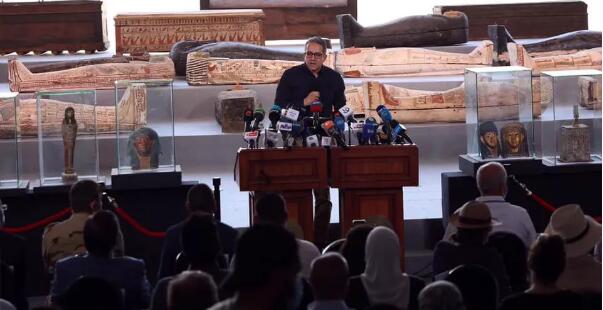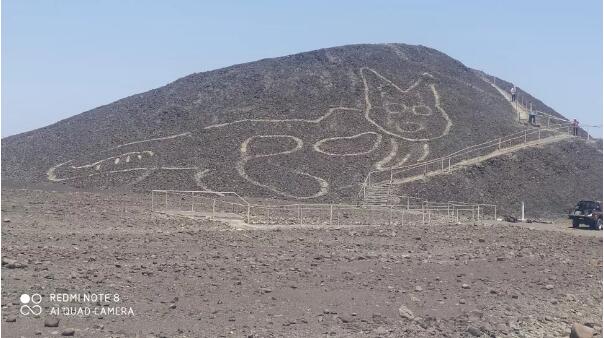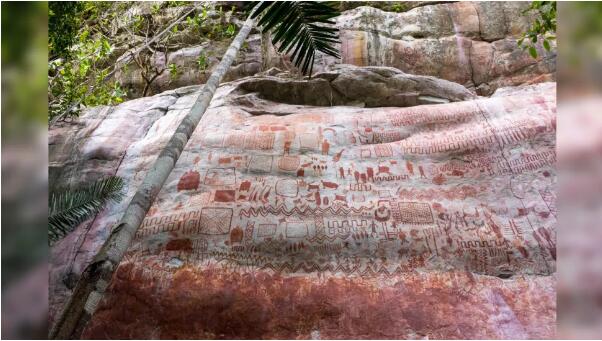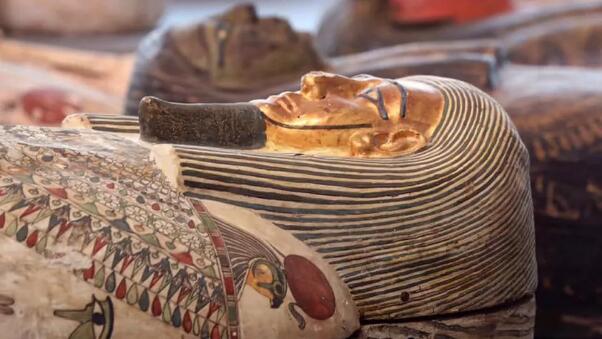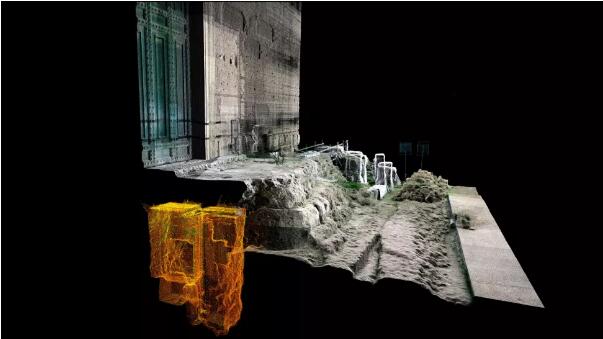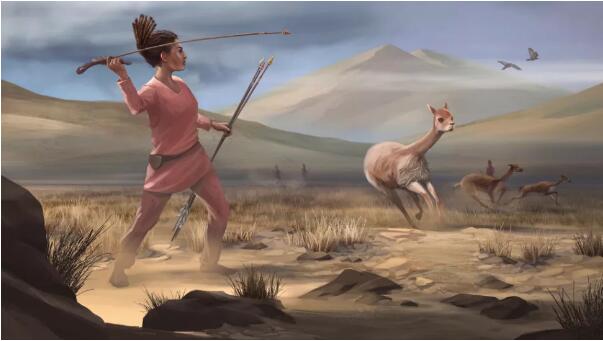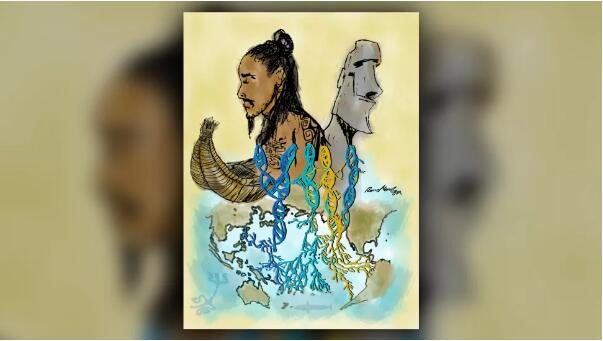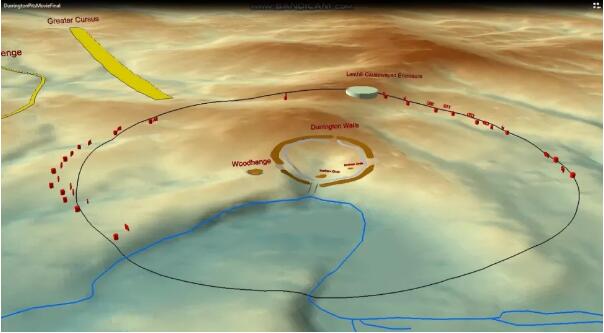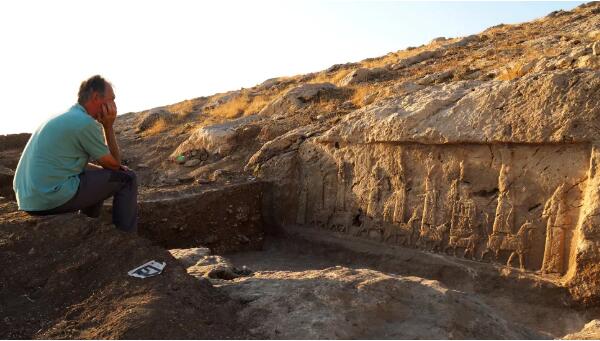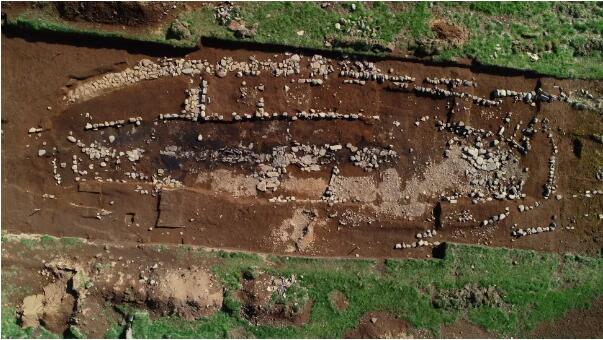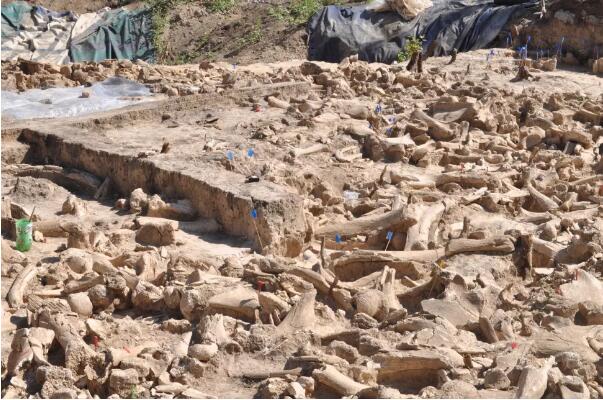With the pandemic and accompanying economic recession clouding 2020, it goes without saying that the year will not go down as the happiest for humanity. The archaeology world also felt the effects, as numerous digs were canceled or curtailed as a result of the COVID-19 pandemic. Despite the difficult year, many archaeological and historical discoveries came to light, including a sprawling geoglyph in Peru, a trove of mummies, the tomb of the legendary Romulus and more.
Cat revealed at Nazca
A 120-foot-long geoglyph of a cat discovered in Peru in 2020 is the most recent example of a Nazca Line to be found. The geoglyph was heavily eroded and barely visible, but conservation work revealed a more complete picture of the cat, which looks a bit like a child's doodle. Archaeologists estimate that the geoglyph was constructed sometime between 200 B.C. and 100 B.C., a time when many Nazca Lines were being built.
Amazon ice-age art
In 2020, archaeologists announced the discovery of an 8-mile-long (12.9 kilometers) "canvas" of ice-age art that dates back 11,800 to 12,600 years. Drawn using ocher, the images include depictions of mastodons, giant sloths and other now-extinct beasts that lived at the time. The images were drawn in the hills above three rock shelters in the Colombian Amazon.
The drawings also include human handprints, geometric designs, and images of deer, tapirs, alligators, bats, monkeys, turtles, serpents, porcupines, camelids and horses, among other animals. There are also drawings showing people hunting animals and interacting with plants and trees. The excavations were made possible thanks to a 2016 peace treaty that put an end to hostilities between the Colombian government and FARC, a rebel guerrilla group. With the onset of peace, the region became accessible to archaeologists.
Mummies galore!
More than 100 sealed coffins with mummies have been found at Saqqara, in Egypt. Excavations are ongoing, and more mummies will likely be found.)
Since summer 2020, Egyptian archaeologists have been excavating a series of burial shafts at the site of Saqqara and have found an ever-growing number of sealed coffins with mummies inside. As of Nov. 14, the count was up to over 100 coffins containing mummies, and as the excavations continue, more will likely be found. In Egypt, tombs were frequently robbed in both ancient and modern times, and to find so many undisturbed, sealed coffins with mummies is a remarkable find.
Numerous artifacts have been found within the coffins, including 40 statues that depict Ptah-Soker, a deity who was an amalgamation of Ptah, the god of Memphis, andSoker (also spelled Sokar and Seker), who was the god of Saqqara. All of the finds date to between roughly 712 B.C. and 30 B.C., a time when Egypt was often controlled by foreign groups, such as the Assyrians, Persians and Greeks.
Tomb of Romulus
In February 2020, archaeologists announced the discovery of the tomb of Romulus beneath the Roman Forum's Senate House. According to legend, Romulus founded Rome in the eighth century B.C. He and his brother Remus were supposedly abandoned as infants and raised by a she-wolf. When they reached adulthood, the two brothers got into a dispute over which hill Rome should be built on, and Romulus killed Remus. Today, most historians regard the story as mythological and doubt that Romulus really existed. However, the ancient Romans took it seriously and placed his tomb beneath the Senate House, the heart of Roman politics.
Inside the tomb, archaeologists found an empty 4.5-foot-long (1.4 m) sarcophagus made of a light volcanic stone, called tuff, that was quarried from the Capitoline Hill beneath the Roman Forum. The tomb has been 3D laser scanned, and future excavations may reveal more details about it.
Female hunters
In 2020, the idea that males did all of the big-game hunting while females gathered herbs and plants was proved wrong, as archaeologists found a 9,000-year-old burial of a female hunter in Peru. She was buried with a hunter tool kit that included projectile points and flakes, and she may have hunted vicuñas, wild ancestors of alpacas.
The archaeologists who excavated the woman's remains do not believe she was an unusual case. When they analyzed over 400 skeletons that had been previously excavated in the Western Hemisphere, the archaeologists found that 27 were buried with tools suitable for hunting big game and 11 of those individuals were female, suggesting that females often hunted big game in the Western Hemisphere.
Polynesians meet Native Americans around A.D. 1150
A large study that involved gathering DNA from 807 Indigenous individuals from Polynesia and the Pacific coast of South America has revealed that Polynesians and native peoples of Colombia not only made contact but also bred with one another around A.D. 1150. It's not clear how the groups met; the Polynesians may have sailed to South America or vice versa.
Either way, their descendants were living in the Marquesas Islands — about 4,350 miles (7,000 km) from the coast of Colombia — by A.D. 1200, and gradually branched out to other islands in Polynesia.
Biggest prehistoric monument in the U.K.
The biggest prehistoric monument in the U.K. was revealed in 2020. Dating to around 4,500 years ago, during the Neolithic period, it consists of 20 giant holes that appear to mark the boundaries of an earlier enclosure circle. Each of the holes is 32 feet (10 m) in diameter and 16 feet (5 m) deep. The holes form a circle stretching 1.2 miles (2 km) and covering an area larger than 1.2 square miles (3.1 square km). It's so large that it has Durrington Walls, the largest henge in the U.K., at its center.
It's not clear why the giant circle of holes was created. It's possible that it formed a symbolic barrier that told certain members of society how close they could get to Durrington Walls. Another possibility is that the holes were used to hold water during the wet season. In any case, the circle of holes is one of a kind, with no comparable prehistoric monuments known elsewhere, archaeologists said.
Assyrian rock panels
Ten ancient Assyrian rock panels showing carvings of Assyrian deities were discovered at a canal that dates back more than 2,700 years. They include carvings of Ashur, the main Assyrian god, who is shown on a dragon. They also show Ashur's wife, Mullissu, who is seated on a decorated throne supported by a lion. Other depictions include the sun god Shamash on a horse and the moon god Sin on a horned lion. All of the deities face in the direction of the water that flowed in the canal.
The panels and canal were likely built during the reign of the Assyrian king Sargon II, who ruled from 722 B.C. to 705 B.C. In the rock panels, Sargon II is shown at the beginning and end of the procession of deities.
Archaeologists announced the discovery of the canal and rock panels, found near Mosul, Iraq, in January 2020. Work on uncovering the panels began in 2012, but when the terrorist organization ISIL (also known as ISIS or Daesh) approached the region,archaeologists hid the panels to prevent their destruction by ISIL. As a result the panels were not fully uncovered until recently.
Rich ninth-century Viking longhouse on Iceland
In June 2020, archaeologists in Iceland announced the discovery of a 130-foot-long (40 m) longhouse that was built in the ninth century. It is one of the earliest Viking structures in Iceland to be discovered and has lavish hoard of ornamental beads and coins archaeologists found.
The finds include Roman and Middle Eastern silver coins, as well as "hacksilver" — cut and bent pieces of silver that the Vikings and other peoples used as bullion or currency. The hoards also contained glass beads, rings, weights and a tiny fragment of gold. The Vikings who lived there may have acquired the goods by trading whale and seal meat and skins for them.
Mammoth structure
A circular structure constructed out of the remains of at least 60 mammoths was discovered in Russia. Bones from reindeer, horses, bears, wolves, red foxes and arctic foxes, among other animals, were also used to build the structure, archaeologists said. Dating back around 20,000 years, the structure is 36 feet (11 m) in diameter and may have had a roof made of animal hides, the researchers said.
The purpose of the structure is a bit of a mystery. It might have been used for rituals, or possibly food storage. At the time, pieces of animal meat were still attached to the bones, which would have made the structure smelly. Archaeologists could tell that they had meat on them because some of the bones were articulated (joined together) in a way that could only have been done if flesh was still on them.

